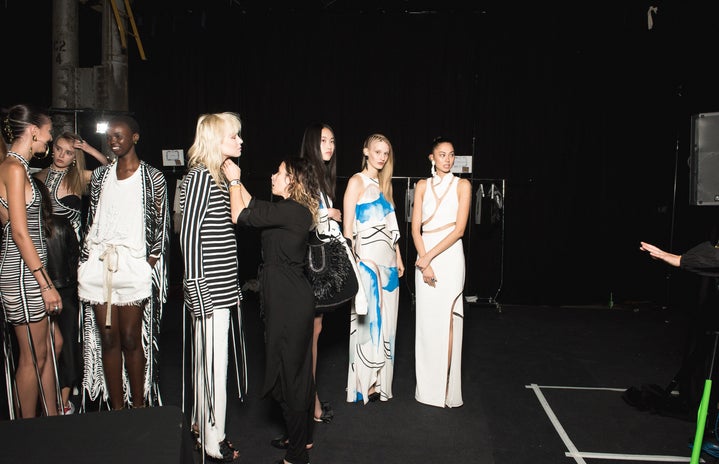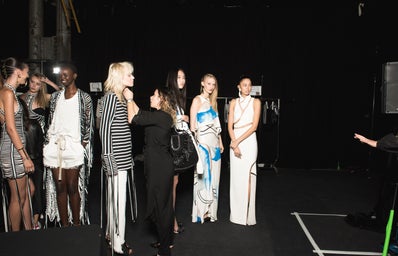TW: body image, weight gain/loss, dieting
How is body positivity changing? Lots of brands now have a wider range of sizes available and models of different races and shapes modelling their clothes too, but is this enough? Or is it at least heading in the right direction?
The rise of social media brought a rise of unattainable body standards along with it. The ‘ideal’ bodies we see on social media have changed over the years, with a different shape being ‘in fashion’ every year. I remember my Instagram feed being full of unhealthy body standards at a young age, and it is only now becoming more inclusive of different shapes, sizes and ethnic backgrounds.
Lockdown introduced an increased awareness of health and fitness. When everyone seemed to be using lockdown to somehow better themselves, many people decided that weight-loss would be their lockdown goal. My TikTok page was full of weight-loss trends. While some were very positive (congrats Flo for fitting back into your jeans), others promoted disordered eating. Being healthy and being ‘thin’ are two different things that don’t necessarily go hand in hand. Weight-loss or gain isn’t bad – it’s what the reasons behind it are that can turn it into something negative and damaging very quickly.
When we hear of the modelling industry, we think of glamour, but often it can be a harsh industry to be a part of. As a model and body activist, Charli Howard discusses her experiences with the modelling industry both positively and negatively. As part of The What’s Underneath Project, she candidly discusses how she came to accept her body whilst under scrutiny from the modelling industry. Having been dropped from her agency at age 23 for being ‘too big’, body positivity is a topic very close to her that she discusses very openly, including in her book, Misfit.
Being ‘thin’ used to be the aim to meet beauty standards. Many of us grew up as part of the ‘thigh gap’ generation when size and beauty came as a pair. After this, Victoria’s Secret models took the world by storm and being thin as well as toned, became the new ideal. Even the fact that they’re called ‘Angels’ shows how we, as a society have idolised the models. Victoria’s Secret models became a brand. Since then, they’ve been emphasising their combination of food and exercise that got them to where they are today. They also have become more open to different body types recently, even though they are often under fire for their unattainable body standards. For example, Valentina Sampaio is Victoria’s Secret’s first openly transgender Angel, Maria Borges was their first black model to walk the runway in 2015 with her natural hair and, Winnie Harlow was their first model to walk with vitiligo. However, there is still a long way to go in terms of size inclusivity from the brand.
Other brands have increased their plus-size/curve ranges, and curvy models are becoming increasingly visible in the public eye. Curvy women are no longer expected to go to specialised shops to find their size -however, size inclusivity doesn’t make a brand inherently good. What it does achieve though, is that it puts the issue into the mainstream and encourages other brands to do the same. Size inclusivity doesn’t make a company body positive in all aspects either. Size is only the most apparent component of body positivity, and often, other elements, such as race, are left out.
Some media outlets thrive off shaming the before pictures from Photoshop and shaming natural bodies, which only worsens the strive to become more body positive. Someone showing off their natural body is also often described as ‘brave’, which, although arguably it is, this description forces people into thinking that their natural body is something to be ashamed of. The media became obsessed with Adele’s weight-loss recently, which isn’t anyone else’s business other than her own, and it reduced her musical success to her appearance. The media has a habit of equating women’s success to their appearances. Still, we can also use the media to promote a healthier and more inclusive body standard.
What can we do?
- Models struggle with body positivity too. Just because their job is to put themselves in the public eye doesn’t mean their bodies are for us to comment on.
- We can demand standardised sizing as much as we like. Whether it will ever become a reality is something we can only dream for. Size small in one shop and a size large in another doesn’t make you ‘big’. Even within the same shop, it’s about if you feel comfortable in what you’re wearing rather than what it says on the label.
- Compliments without comparison – including a comparison to your past self. Your hips will be bigger when you’re 20 compared to when you were 12.
- Body positivity needs positive representation, not just representation.
Body positivity does seem to be changing, just at a very slow rate, but it’s something we have control over. Being more body-positive will always start with yourself.

